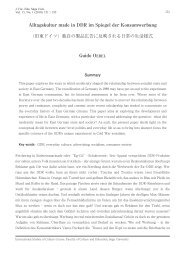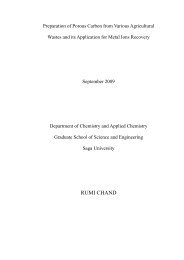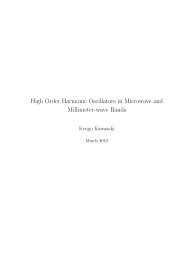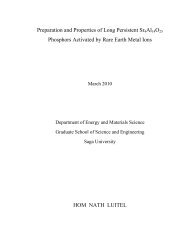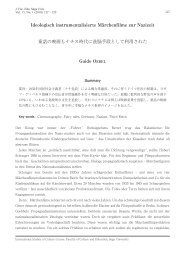ε (eV)
ε (eV)
ε (eV)
You also want an ePaper? Increase the reach of your titles
YUMPU automatically turns print PDFs into web optimized ePapers that Google loves.
during a short time interval dt is proportional with the bacteria population. This<br />
is, if dN bacteria dies during a time dt from an initial population of N bacteria,<br />
then with 2N bacteria, the number of inactivations in the same time interval dt<br />
will be 2dN. This means that, for short time intervals, bacteria die independently<br />
of each other, since the inactivation rate is not influenced by the proximity of<br />
one bacterium to others. Given the above observation, the inactivation speed r,<br />
defined by Eq. (2.2), can be written as<br />
r = α · N, (2.4)<br />
where the proportionality constant α is called the decay coefficient of the bacteria<br />
population. The quantity α is thus independent of t and N, and depends only on<br />
the type of bacteria and on the type of the inactivation agent used for sterilization.<br />
Introducing Eq .(2.4) in (2.3), the variation rate of the viable bacteria with<br />
time can be expressed by the following differential equation<br />
dN<br />
dt<br />
= −α · N. (2.5)<br />
Separating the variables, integrating, and using the initial condition<br />
N(t =0)=N0, (2.6)<br />
the evolution of the number N of viable microorganisms ones, and with the treat-<br />
29



